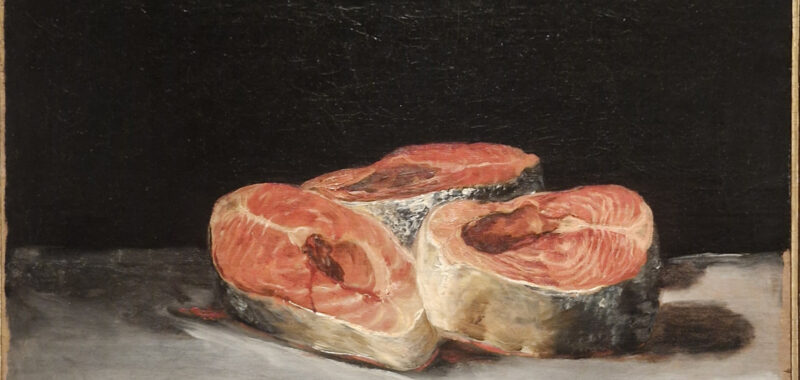LONDON — The introduction of the catalog accompanying Goya to Impressionism. Masterpieces from the Oskar Reinhart Collection congratulates the Courtauld for “bringing this remarkable exhibition to life.” Which is odd, as the show appears to be a slice of the admittedly fabulous Oskar Reinhart Collection in Winterthur, Switzerland, dumped here wholesale during the latter’s closure for renovation in 2025. The issue with a show conceived literally as a holding pen for a collection — an identity the Courtauld seems to be leaning into, as it will also soon be hosting pieces from the Barber Institute at the University of Birmingham as that gallery also undergoes renovations — is a lack of curatorial narrative, or even purpose.
The accompanying captions to the paintings in this two-show room fall far short of the contextual and stylistic analysis the Courtauld Institute — which teaches art history — should be known for. Instead, we have superficially observational statements of the bleedingly obvious, and some wildly dubious assertions.
For example, a caption accompanying “Lily and Greenhouse Plants” (1864), an impressionistic still life, tells us Renoir “depicts an array of potted plants clustered in a greenhouse,” which one might observe by using one’s eyes. For Cézanne’s watercolor sketch “Bathers” (1900–6), we are told “the nude bodies are formed from areas of bare paper, their shapes indicated by blue and light brown outlines.” My heart bleeds for the precious wall space given to the reviewer who forgot the assignment and just described the plot. For Goya’s fabulous “Still Life with Three Salmon Steaks” (1808–12), a plate of juicily glistening salmon slices against stark background painted during the Peninsular War (1807–14), it is suggested “the raw realism of these salmon steaks, isolated from any context, the flesh rendered in blood red, suggests the brutality of war.” I’m sorry, what? The captions do diligently state the year that Reinhardt acquired them, as if this holds some significance.

So who wrote this stuff? Who even curated this thing? No human curators are listed, but something called “Griffin Catalyst” is “Title Partner” (what does that mean?); the exhibition is “supported by Kenneth C. Griffin.” Some may remember Griffin as the billionaire CEO of alternative investment fund Citadel LLC, and the purchaser of a stegosaurus fossil from Sotheby’s in 2024 for $45m. Griffin Catalyst is apparently his philanthropic enterprise, dedicated to “[partnering] with innovative organizations to pursue game-changing projects that drive impact at scale.” Something similar occurred at the Tate when the YAGEO Foundation commandeered its walls to display a thoroughly sanitized (and atrociously curated) show of its private collection. It seems that the philanthropic funds that enable excellent shows like this to happen are at the expense of art historical depth and integrity, perhaps even curators’ jobs.
This example of corporate curating (or lack of) portends a worrying gulf between funding and the survival of art historical discipline in exhibition-making. The result is exhibitions that feel nothing more than perfunctory. With that in mind, try to enjoy and be grateful to Mr. Griffin et al for making them available to you — it is a rare pleasure to see a Goya still life after all, and some superb late Van Gogh. There is even one of Gericault’s portraits of individuals thought to be suffering from mental illness: “A Man Suffering from Delusions of Military Grandeur” (1899–22) is a curious inclusion for a collection that seems to focus on ticking off major names that every rich collector should own. According to the catalog, this is the third in a series of major Griffin Catalyst exhibitions at the Courtauld, the aim of which is to “inspire and challenge visitors of all backgrounds.” Not with that insipid, flat, and perfunctory curating, it won’t.



Goya to Impressionism. Masterpieces from the Oskar Reinhart Collection continues at the Courtauld Gallery (Somerset House, London, England) through May 26. The exhibition was organized by the museum.

